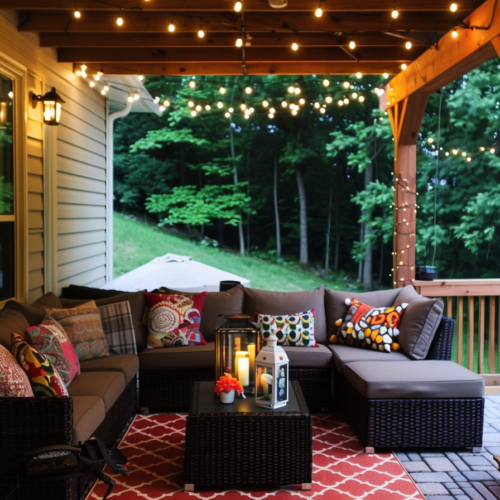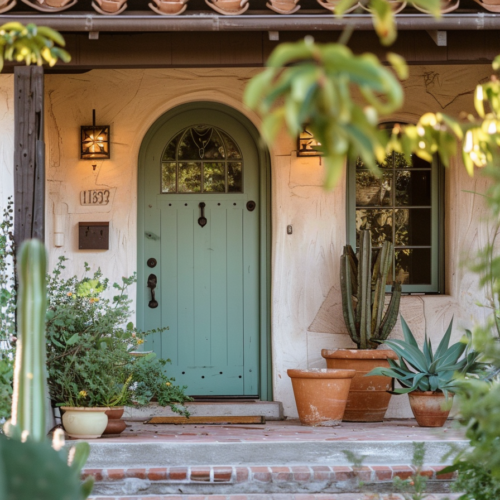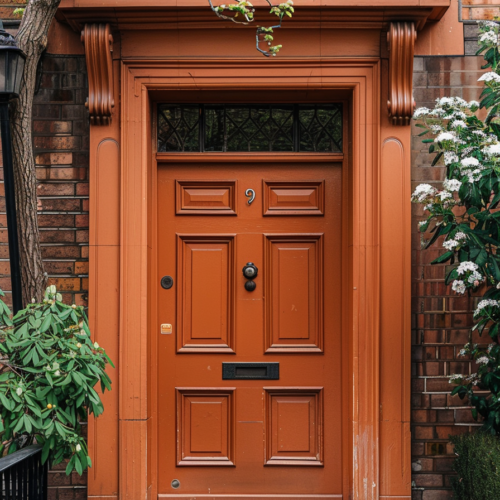Lamps are a common household item. You might have at least one in your home, and many of you reading this will likely have several lamps conveniently placed around your home to provide light where you need it.
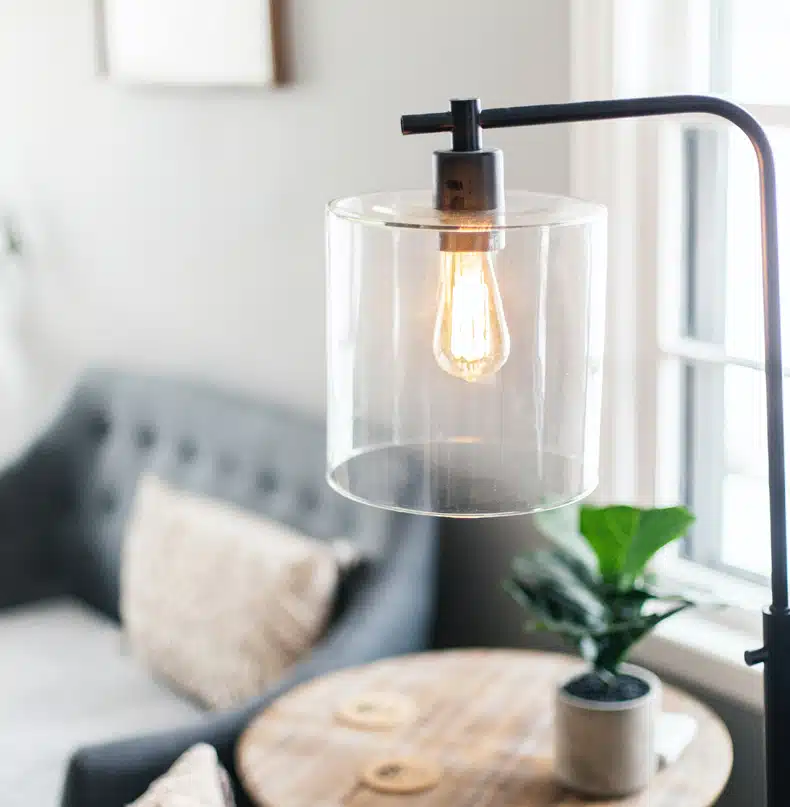
However, when a single piece needs to be replaced, it can be difficult to explain precisely what you need to the salesperson at the hardware store, so what are all the parts of a lamp?
There are several parts to a lamp:
- Lock
- Lampshade fitting
- Lampshade
- Bulb
- Harp
- Socket Shell
- Insulation sleeve
- Switch
- Base
- Threaded tube
- Body
- Plug
- Lamp Base
- Anti-slip material
In this article, I’ll break down the different parts of a lamp and also touch on what types of bulbs you should use if that matters to you.
What Are The Parts Of A Lamp (Lamp Part Names)
If you are looking to replace parts of an old lamp that you have had for several years or need to care for your lamp, knowing what the individual parts of your lamp are will surely be helpful. Let’s dive straight into it and examine what each part of your lamp is called and what each part is responsible for.
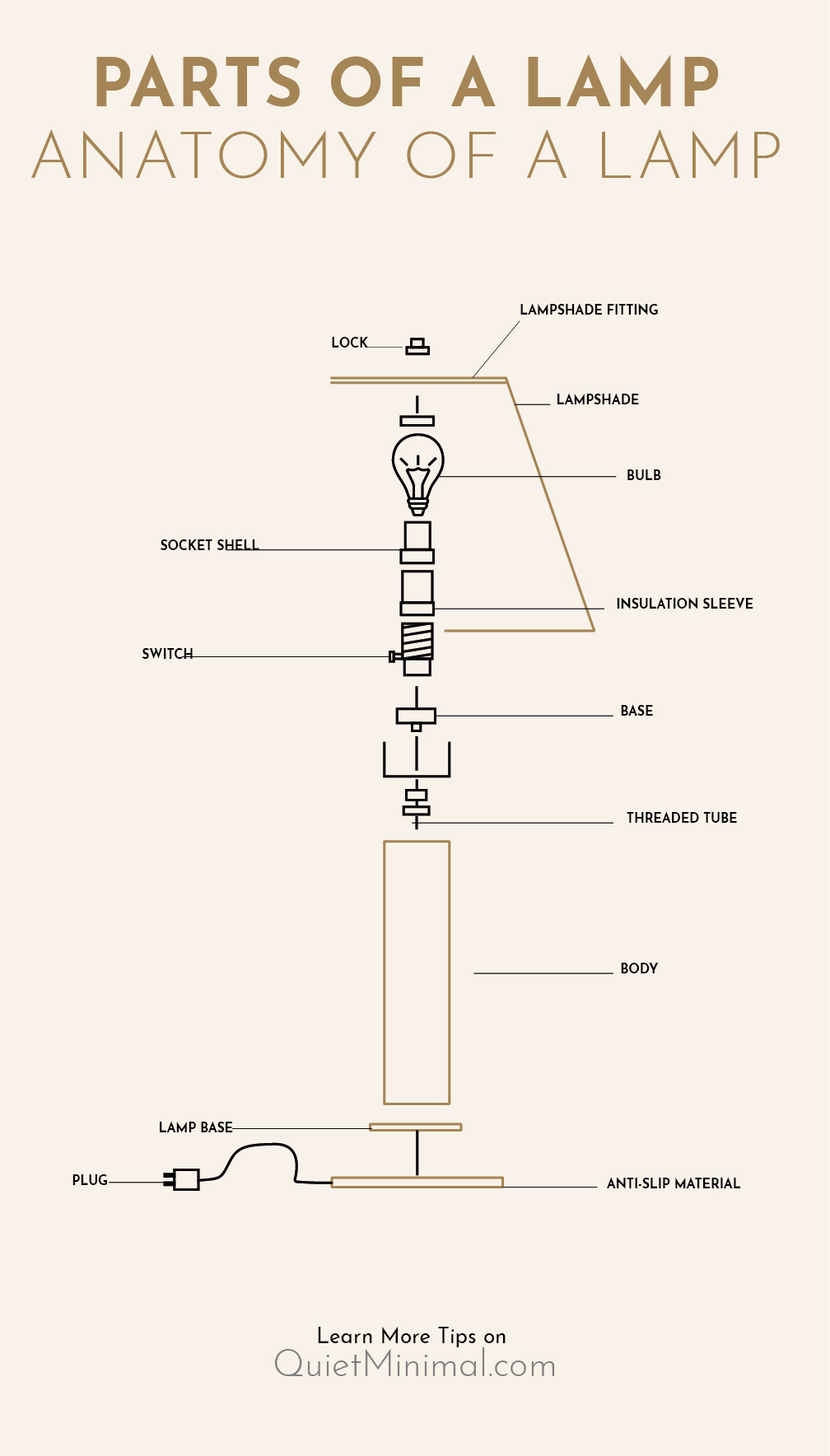
Anatomy of a lamp / Parts of a lamp
Lock
The lock on a lampshade is responsible for locking the lampshade firmly in place.
Lampshade fitting
The lampshade fitting is the lampshade’s exoskeleton, which defines your lampshade’s overall shape and structure.
Lampshade
The purpose of the lampshade is to shield your eyes from the brightness and glare of the lightbulb. The lampshade comes in many styles, colors, and designs. It is also constructed from various materials that range from fabric, plastic, metal, and sometimes even glass.
The lampshade is integrated into the lamp itself, or it may come as a separate piece attached to the shade stand. The lampshade often comes with a decorative knob called a finial when attached to a stand.
There are several lampshade styles, and I have listed a few of the most common ones below:
- Classic Drum
- Tapered Drum
- Shallow Drub
- Shallow Tapered Drum
- Classic Oval
- Classic Empire
- Pembrooke Empire
- Gallery Empire
- Bell
- Horn
- Cut Corner Inverted Square Bell
- Sharp Corner Square
- Sharp Corner Square Tapered
- Sharp Corner Rectangle
Bulb
The purpose of the bulb is to provide light since, without a light source, your lampshade is useless and only serves as a decorative piece, not a functional piece. Most light fixtures and lamps use standard 100-watt 120-volt light bulbs. Newer light bulbs are energy-efficient and last ten times longer than regular ones.
Some light bulbs are meant for decorative purposes and add a bit of elegance to a room. The shape and color of the decorative bulbs may differ from traditional light bulbs. You might find decorative bulbs that resemble candles with an imitation flame.
Some bulbs might even be globe-shaped, a variation of traditional pear-shaped light bulbs. You might also find novelty bulbs with unique shapes and painted designs.
Harp and Harp Holder
The purpose of the harp with the harp holder is to provide vertical support for the shade and light bulb. The harp with the harp holder will vertically hold your lampshade and light bulb.
Socket / Socket Shell And Lamp Holder
One of the main components for your lampshade is the socket and its socket shell. The socket is used to provide a space for the light bulb to connect to the lamp.
Not every lamp will feature a socket shell, but all lamps must have a socket for the light bulb to be fitted into place. The lamp socket can supply electricity to the light bulb with an established contact made.
There are various sockets/lamp holders to suit all different light bulbs.
Bayonet Base Lamp holder
This socket consists of two pins that allow for the locking and twisting of the bulb into place.
Fluorescent Lamp Holders
These sockets can accommodate linear, bent, and compact bulbs. They might have a single pin or two pins and are either shunted or non-shunted.
Halogen Lamp Holders
Halogen lamp holders are available in two voltages, namely, line voltage and low voltage, and are available in different sizes and shapes. The most common ones are round and rectangular.
Medium-Base Lamp Holders
These are some of the most common and widely used lamp holders and light bulbs. They are also commonly referred to as Edison base lamp holders.
Metal Halide Lamp Holders
These sockets are manufactured from durable materials to accommodate high-intensity discharge lamps.
Mogul-Base Lamp Holders
These sockets are cast from sturdy porcelain that allows them to withstand high operating temperatures from light bulbs.
Wedge Base Lamp Holders
These lamp holders are designed to accommodate the wedge-shaped bulb base with wrap-around wires. These sockets are available in several materials and mounting styles.
Insulation sleeve
The insulation sleeve is meant to secure the socket shell to the switch and base of the lamp.
The insulation sleeve is also meant to protect the lamp’s electrical wiring from high temperatures and abrasion that could cause electrical damage to the lamp and its internal electrical components.
Switch
The switch is probably an essential component of the lampshade. The switch is usually integrated into the lamp or separated and mounted into a nearby wall. Without a switch, you will be unable to activate the electrical current to flow through the lightbulb.
There are two switch varieties with different functions. Push-button, toggle switches, and rocker switches are commonly found in many homes. These switches have only two positions, on and off.
On the other hand, dimmer switches control the brightness and allow the user to alter light levels. These lamps are helpful for people that do not like to use lamps as a light source for reading.
There is also a modern variation on the switch that is touch-activated. These switches can be turned on or off by a mere touch to the lamp’s base. In addition, these types of switches allow for the adjustment in the bulb’s brightness, much like a dimmer switch. There are other lamps where the switch is integrated into the plug.
Lamp Base
The lamp owes its form, shape, and support to the lamp’s base. The lamp’s base can take the form of plain wood, metal, plastic, or ceramic. These can be solid pieces or complicated hinge mechanisms. Similar to the lampshade, the lamp’s base is functional and aesthetic.
Threaded tube
The threaded tube component is optional for most lamps. However, the function of the threaded tube is to connect the wiring from the body to the base and finally to the bulb.
Lamp Body
In certain lamps, like a table lamp, the body is the mid to lower section of the lamp. If you want a decorative lamp, this component is essential as it can affect the look of the lower design of the lamp or even the overall look of your lamp.
Plug
The electrical supply to the lamp is provided by a length of cord that connects to an electrical outlet. Therefore, the primary function of the plug is to allow for an electrical current to flow through the lampshade via the electrical cord. However, some lamps have light fittings installed on a wall or ceiling with the wire connected directly into the electrical system.
Anti-slip material
The anti-slip material can be found beneath the lamp’s base, and its function is to provide a non-slip surface for the lamp so that it does not slide and slip off surfaces. This material can be made from felt or rubber to keep the lamp in place on any surface.
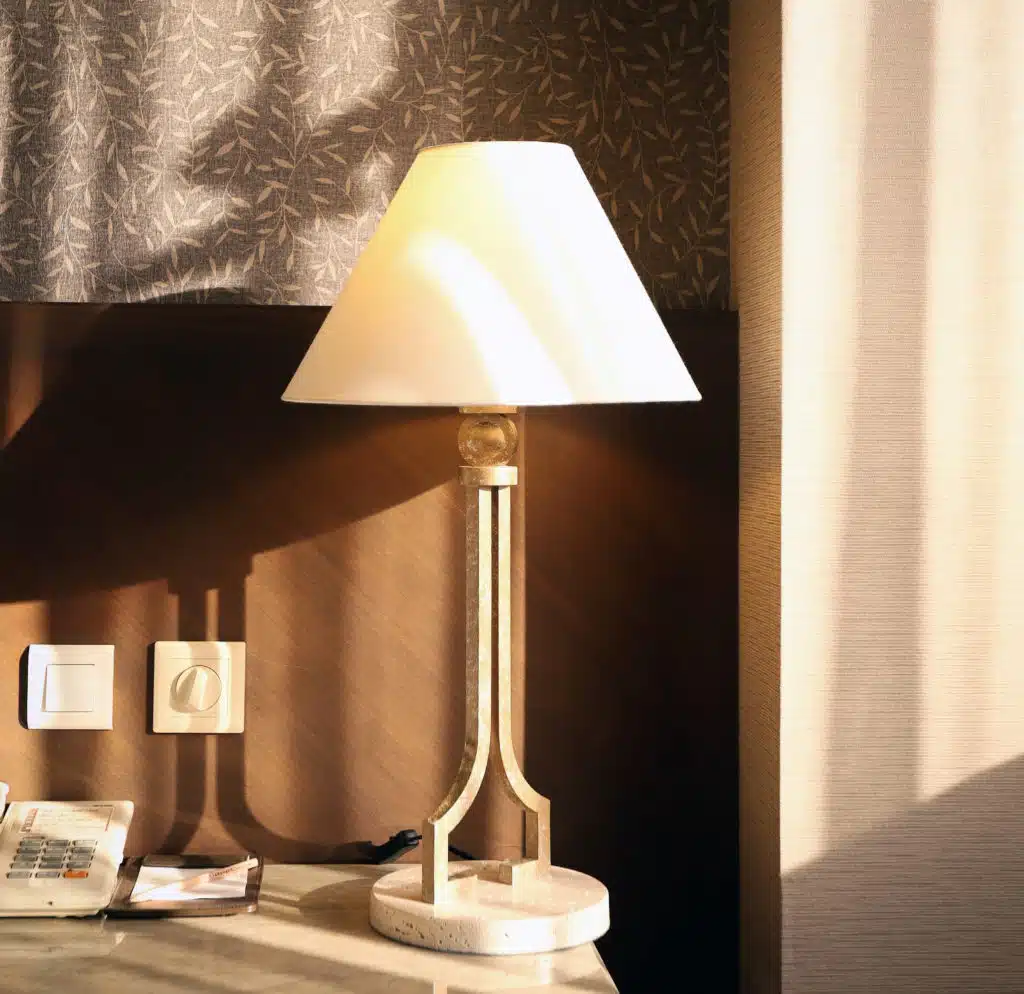
Final Thoughts
In conclusion, turning on a lamp is not rocket science. However, the information provided above will help anyone identify the key parts of a lamp and solve any problems present.
Remember that not all lamps are the same, and this information should be adapted to fit the specific lamp being used. Hopefully, this resource will be helpful to readers looking to purchase a new lamp or replace the broken parts of an older lamp.
Make sure to follow Quiet Minimal on Pinterest for more interior design tips and reviews.
